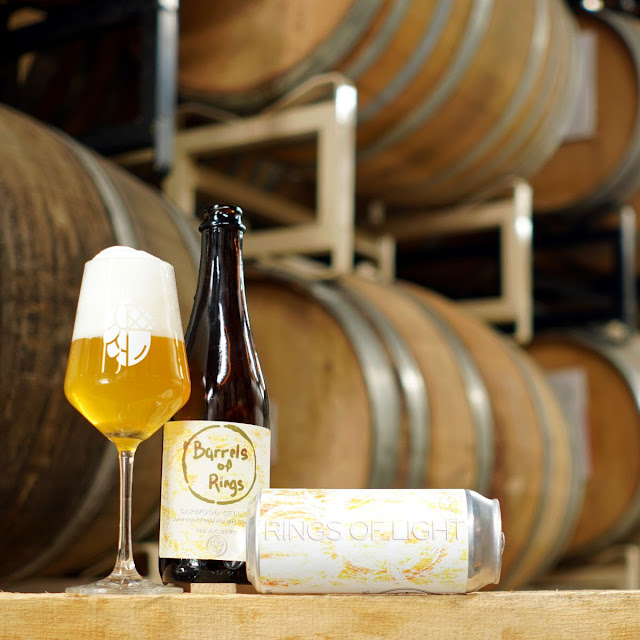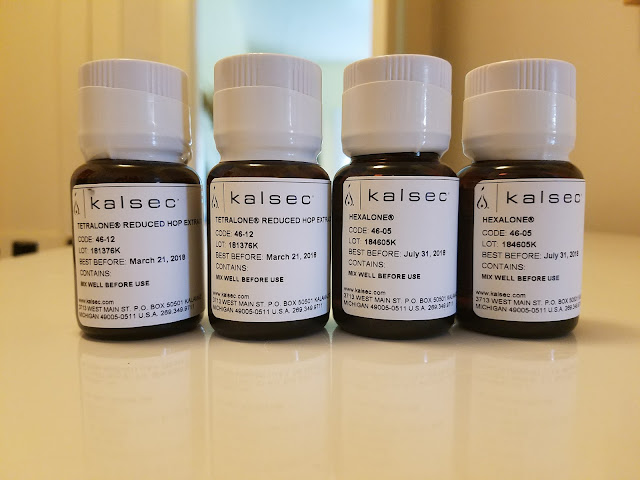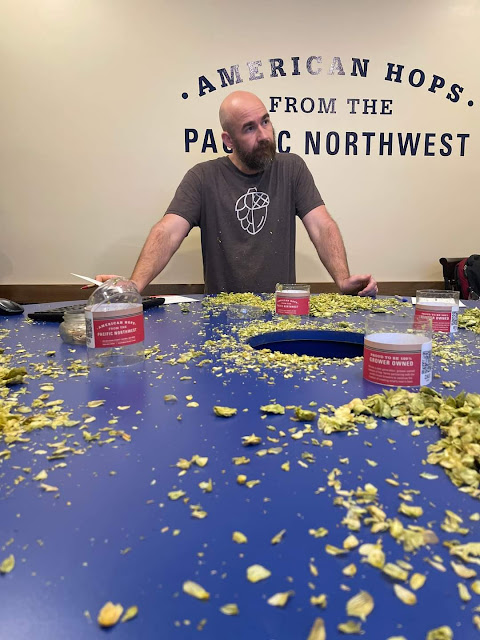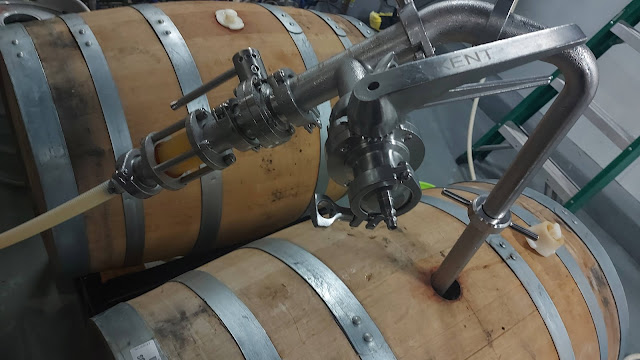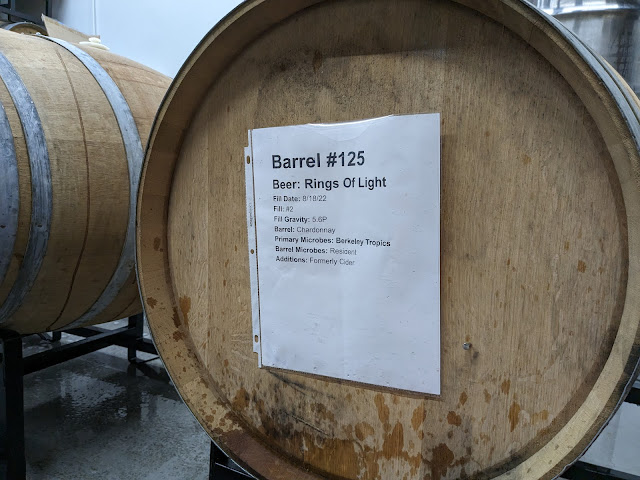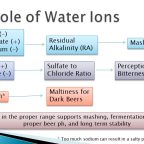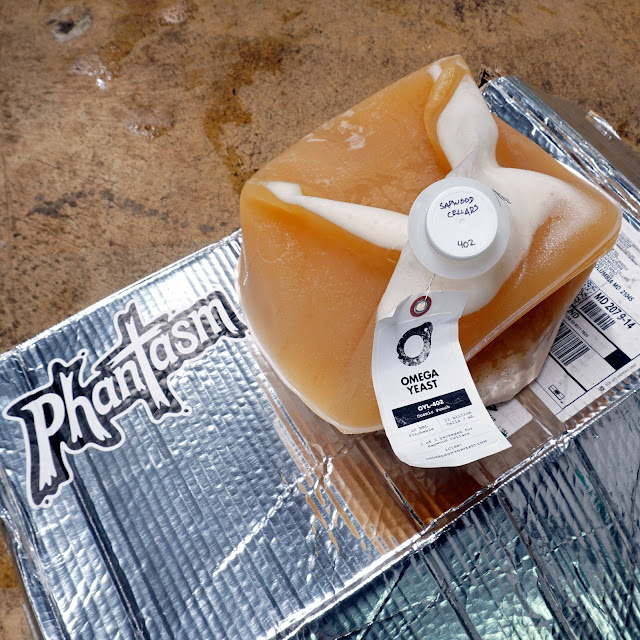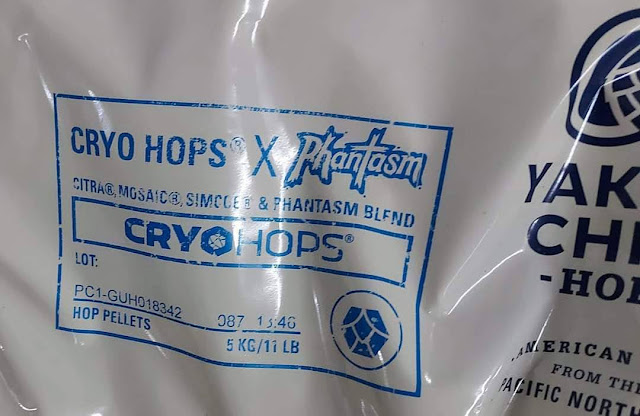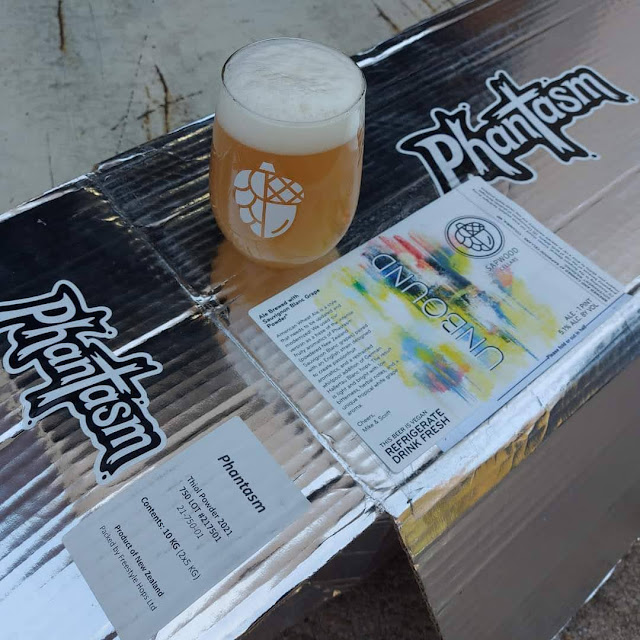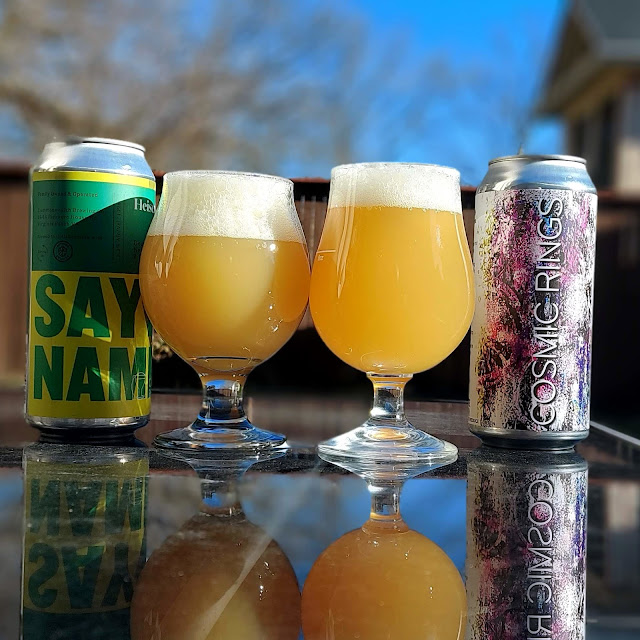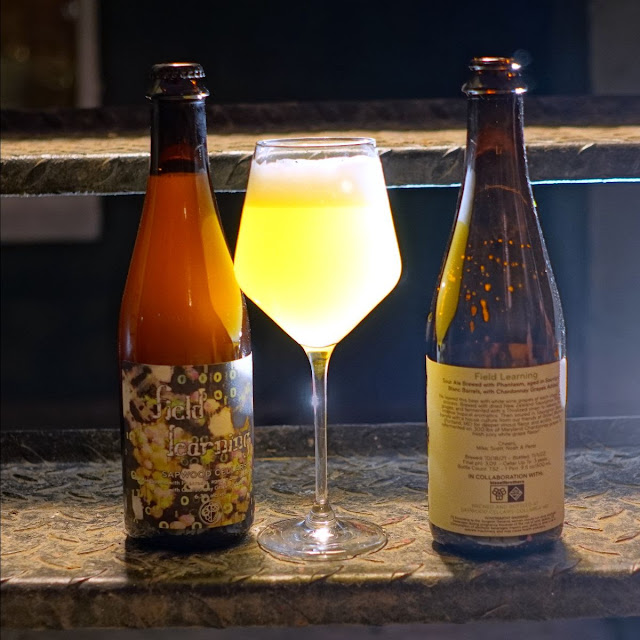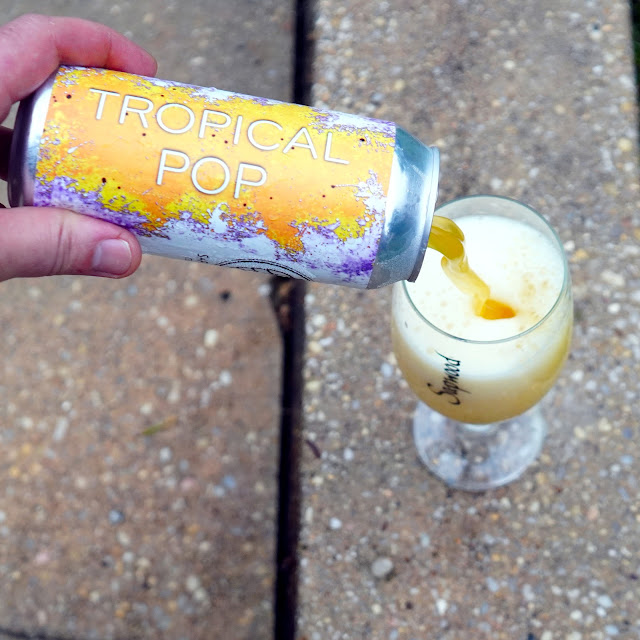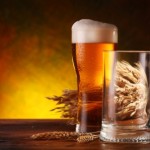mash
 Scott Janish joins me this week to discuss mash hopping and steps he takes to control oxygen and enhance long term beer stability. Subscribe on iTunes to Audio version or Video version or Spotify or Google Play Download the MP3 File– Right Click and Save As to download this mp3 file. Your browser does not […]
Scott Janish joins me this week to discuss mash hopping and steps he takes to control oxygen and enhance long term beer stability. Subscribe on iTunes to Audio version or Video version or Spotify or Google Play Download the MP3 File– Right Click and Save As to download this mp3 file. Your browser does not […] 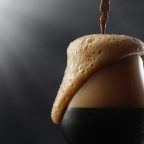 This week I take a look at the brewing of very high gravity beers to include styles like Barley Wines and extreme Imperial Stouts. These beers require somewhat special handling as it can be hard to achieve the very high starting gravity and a good fermentation, and in addition they often require extensive aging. Very […]
This week I take a look at the brewing of very high gravity beers to include styles like Barley Wines and extreme Imperial Stouts. These beers require somewhat special handling as it can be hard to achieve the very high starting gravity and a good fermentation, and in addition they often require extensive aging. Very […]  Michael Tonsmeire from Sapwood Cellars joins me this week to talk about very high gravity barrel aged stouts. Subscribe on iTunes to Audio version or Video version or Spotify or Google Play Download the MP3 File– Right Click and Save As to download this mp3 file. Your browser does not support the audio element. Topics […]
Michael Tonsmeire from Sapwood Cellars joins me this week to talk about very high gravity barrel aged stouts. Subscribe on iTunes to Audio version or Video version or Spotify or Google Play Download the MP3 File– Right Click and Save As to download this mp3 file. Your browser does not support the audio element. Topics […] The longer I brew mixed-fermentation beers, the more I appreciate just how important the hopping rate is. Controlling lactic acid production by inhibiting lactobacillus is hops' most well-appreciated function in sour beers. Hop compounds become more effective at inhibiting Lactobacillus as the pH drops, creating a natural "limit" on their lactic acid production. What it took me a long time to appreciate was how much hop compounds (beyond IBUs) lead to a greater expression of what I think of as classic Brett "funk."
When Scott and I began the mixed-fermentation program in 2018-2019, generally our issue was beers not souring enough. I started pulling levers (lower hopping rates, higher mash temps, less attenuative primary strains etc.) By 2020-2021, we were having excessive acid production... Most non-fruited beers were dropping to a firmly-acidic 3.1-3.3 pH, while fruited beers were often difficult to drink in quantity at 3.0-3.1 pH with some dipping to "obnoxiously acidic" high-2s.
Fruit contributes simple sugars, which Lactobacillus love, and at the same time dilute the hop compounds in the beer. This can cause a precipitous pH drop. With so much beer already in barrels, my first maneuver was to begin dosing alpha acids into the beer along with fruit when there was already enough acid. We started with reduced iso-alpha-acids (e.g. tetralone/hexalone), but have moved onto Hopsteiner Alpha Extract 20% since it doesn't add perceived bitterness. About .1-.2 g per gallon stops acid production for our bacteria. These products don't significantly change the flavor or add additional aromatic complexity. As a side benefit, they enhance head retention. A small dry hop at this stage would be another option if you wanted stop acidification and add hop aromatics.
At this point we started upping the aged hop rate, or aiming for higher IBU targets when using fresh hops (~15-20 IBUs). At the same time (~2021) Scott and Ken (our head brewer) wanted to try barrel-aging more aromatically hoppy beers... I was resistant. I love hoppy-sour beers, I did a whole talk about them at the 2016 National Homebrewers Conference. Generally my approach had been to make sure the hops go into the beer as close to serving as possible (e.g., dry hop a barrel-aged sour after aging, brew a quick-turn hoppy Brett saison, add a whirlpool addition after kettle souring). I'd tasted too many barrel-soured IPAs and pale ales from great breweries that smelled like "old hoppy beer." That said, Ken and Scott convinced me! At our scale it is a relatively low risk to divert a few barrels of pale ale to see what happens.
We're already "aggressive" with our measures against oxygen pick-up (purging barrels with carbon dioxide before filling, purging the barrel-tool between each fill, purging the bottles before filling etc.), but when we fill barrels with pale ale wort we pull out all the tricks. Most importantly, we selected barrels that could be refilled without rinsing, leaving several gallons of "house culture" at the bottom of each. Our goal was to start the secondary fermentation as quickly as possible to protect the delicate hop compounds. I was amazed how good the resulting beer tasted!
What has really intrigued me is that the hoppier bases have almost universally produced finished beers I'd describe as more Brett-forward (earthy, funky, fruity, horse blanket). What I don't know is why! In American Sour Beers I cited research that Brett can free glycosides in hops, so that could explain the fruity. Maybe hops are just inhibiting Lactobacillus, giving the Brett a healthier environment (in lambics Brett tends to thrive before Pediococcus dramatically lowers the pH). Maybe I'm just being fooled and higher hopping rates (aged or fresh) are adding key compounds that I associate with the "funk" in a Cantillon, Orval (and many of my favorite American mixed-ferms)! These days our typical hopping rate is .5 lbs/bbl of aged hops at the start of the boil, and .5 lbs/bbl or fresh low alpha-acid hops in the whirlpool.
Barrels of Rings is one of the bottles included with the first shipment of the Sapwood Cellars Shipping Club. It started as Rings of Light, brewed summer 2022, racked into barrels after primary fermentation, but before dry hopping. After 10 months of aging, we transfer directly from the two wine barrels into our blending tank (purged with 5.5 pounds of our selected Citra Cryo already in there). We agitated/roused and allowed to settle for a couple days, dropping the hops. Then we primed with sugar and rehydrated wine yeast (as we do for most of our barrel-aged sours) and partially carbonated the beer. As with the barrel fill, we're relying on CO2 purging of the bottles and the rapid refermentation to scavenge oxygen and preserve hop aromatics.
Recipe: Barrels of Rings
OG: 1.063
65% Briess Brewer's 2-row
14% Great Western Malted White Wheat
13% Grain Millers Flaked Oats
8% Best Chit Malt
IBUs: 40
.5 lbs/bbl Meridian @ Whirlpool (212F)
1 lb/bbl New York Cascade @ Whirlpool (180F)
Bravo Salvo Hop Extract @ Whirlpool (180F)
Fermentation with Omega Cosmic Punch (the barrel sheet below is incorrect)
FG (Primary) 1.022
Brewed 8/5/22. Barrels filled 8/11/22
Barrel #6: Fifth-fill Chambourcin red wine barrel that previously held our original barrel-aged pale ale, Measure Twice. That barrel was started with dregs from our collab with Free Will (Erma Extra), but along the way it was filled with bases that had dregs in primary from various American saisons (Casey and Holy Mountain).
Barrel #125: Second-fill Chardonnay white wine barrel that previously held a cider fermented with the Bootleg Biology Biology Mad Fermentationist Saison (plus we added the dregs from a stellar bottle of Barrique Wet Hop Reserve after filling).
6/21/23 116 gallons of beer from the two barrels transferred onto 5.5 pounds of 2022 Citra Cryo. 1.5 oz/gallon.
Carbonated to 2.05 vol, reyeasted with Premier Cuvee (rehydrated on a stir-plate with StartUp Nutrient), primed with enough glucose to add 1.1 vol of CO2 (~3.1 vol total in bottle).
Final pH: 3.65
Final Gravity 1.009
7.1% ABV.
Tasting Notes: Barrels of Rings
(My personal notes from a few months ago)
Smell - Nice blend of citrus (orange) and earthy-Bretty-funk. Still really fresh, no oxidative or old-hop aromatics. Really varied nose with a little pine sap, hay, and melon. Another hoppy base that got funkier than most of our bases.
Appearance - Big dense white head, good retention. Light haze, very pale yellow. Attractive.
Taste - Light lemony tartness, but not sour-sour. Very saison-y. Some bitterness, but it doesn’t clash with the light bitterness.
Mouthfeel - A touch of astringency. Great sptrizy carbonation. Medium-light body.
Drinkability - Really nice. The bitterness does give it a different impression than a classic low-bitterness sour base. More saison-like.
Changes for Next Time - Really good, not much to change on this one. Gin barrels would be fun.
When visiting Epochal Barrel Fermented Ales in Scotland last year I was blown-away by how by how good (owner/brewer) Gareth Young's wild ales were aged on whole hops in the barrels for the entire secondary fermentation. I really enjoyed the first beer we did with it, Violet You're Turning Violet (Mosaic in the barrel, finished with a blend of wild and cultivated blueberries). It seems like a good option especially if you want variety in the hop intensity of a base, e.g., start with a more moderate hopped base and add hops to some barrels for blending options.
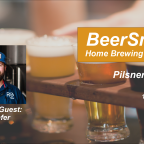 Max Shafer joins me this week to discuss Craft Pilsners, decoction and controlling the pH of your beer during the whirlpool and for dry hopping. Subscribe on iTunes to Audio version or Video version or Spotify or Google Play Download the MP3 File– Right Click and Save As to download this mp3 file. Your browser […]
Max Shafer joins me this week to discuss Craft Pilsners, decoction and controlling the pH of your beer during the whirlpool and for dry hopping. Subscribe on iTunes to Audio version or Video version or Spotify or Google Play Download the MP3 File– Right Click and Save As to download this mp3 file. Your browser […]  Adam Mills joins me this week to discuss the use of Thiol boosting yeast, mash hopping and other techniques to enhance the tropical/fruity flavors in IPAs and New England IPAs. Subscribe on iTunes to Audio version or Video version or Spotify or Google Play Download the MP3 File– Right Click and Save As to download […]
Adam Mills joins me this week to discuss the use of Thiol boosting yeast, mash hopping and other techniques to enhance the tropical/fruity flavors in IPAs and New England IPAs. Subscribe on iTunes to Audio version or Video version or Spotify or Google Play Download the MP3 File– Right Click and Save As to download […]  Dr Greg Casey joins me this week to discuss the interesting history of German Adjunct Lager and how it influenced the rise of American Adjunct Lager here in the US. Subscribe on iTunes to Audio version or Video version or Spotify or Google Play Download the MP3 File– Right Click and Save As to download […]
Dr Greg Casey joins me this week to discuss the interesting history of German Adjunct Lager and how it influenced the rise of American Adjunct Lager here in the US. Subscribe on iTunes to Audio version or Video version or Spotify or Google Play Download the MP3 File– Right Click and Save As to download […]  This week Skip Schwartz, the head brewer at WeldWerks brewing joins me to discuss brewing barrel aged stouts. Subscribe on iTunes to Audio version or Video version or Spotify or Google Play Download the MP3 File– Right Click and Save As to download this mp3 file. Your browser does not support the audio element. Topics […]
This week Skip Schwartz, the head brewer at WeldWerks brewing joins me to discuss brewing barrel aged stouts. Subscribe on iTunes to Audio version or Video version or Spotify or Google Play Download the MP3 File– Right Click and Save As to download this mp3 file. Your browser does not support the audio element. Topics […] 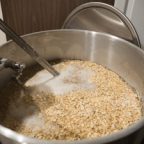 This week I take a look at some of the key process factors when lautering and sparging your all grain beer. Last week in part one, I discussed equipment design and how a filter bed forms around grain husks and creates channels that the wort flows through. I explained why a poorly designed lauter tun […]
This week I take a look at some of the key process factors when lautering and sparging your all grain beer. Last week in part one, I discussed equipment design and how a filter bed forms around grain husks and creates channels that the wort flows through. I explained why a poorly designed lauter tun […] So why all of the excitement from our fellow craft brewers? Obviously many of the collab requests are due to Scott's writing about and advocacy for thiols, but are they just something new that will be passé soon, or are these strains here to stay?
Thiols are sulfur-containing compounds that are often potent aromatics. The ones brewers are excited about are tropical, winey, and citrusy, while other thiols are intensely unpleasant with aromas of garlic or rotten eggs... which is why the thiol mercaptan is added to natural gas to alert people to leaks. The "skunky" aroma of light-struck beer is also 3-methyl-2-butene-1-thiol.
Unlike many other beer aromatics that require concentrations in the ppm (parts per million) or ppb (parts per billion) many thiols have an aroma threshold in the range of 5-70 ppt (parts per trillion). This means that it doesn't take much of them to be apparent, but also means that it doesn't require "high" concentrations to become dominant.
In terms of positive beer and wine aromatics, the thiols that get the most attention are 4MMP, 3MH, 3MHA, and 3S4MP. These have perceptions that range from passionfruit, to grapefruit, to rhubarb. These are the intense aromatics that give New Zealand Sauvignon Blanc wines their distinct aromas and are found free at low-levels in many New Zealand hops (as well as some other varieties from around the world).
Most of the thiols found in hops, malt, and other botanicals are bound and thus not active aromatically. Enzymes are required to free them. There are wine strains available capable of this, but getting those genes into brewer's yeast requires more work.
Bound thiols are found in both malt and hops, but levels vary widely. The bond in need of breaking comes in two "flavors" Cysteinylated (Cys) and Glutathionylated (Glu). The vast majority (90%+) in both malt and hops is Glu. The IRC7 gene in certain wine strains and Omega's Cosmic Punch can only work on the less common Cys. As a result, mash hops are most potentially beneficial for Cosmic Punch, as the enzymes in the mash (especially in the acid-protein rest temperature range) can help convert Glu to Cys. Luckily some less expensive hop varieties have the highest levels of bound thiols. We've used Saaz, Cascade, and Calypso with good results.
The more intense strains like Berkeley Yeast Tropics line and Omega's Helio Gazer, Star Party, and Lunar Crush can simply be added to a standard recipe with or without whirlpool hops. Rather than having more copies of the IRC7 gene, they have a wholly different gene which can free Glu-thiols directly. The IRC7 gene in Cosmic Punch is "sourced" from yeast, while patB Omega uses in the more assertive strains is from a bacteria (if transgenic CRISPR/Cas9 gene modification is a step too far for you). We fermented a kettle sour which only had a small dose of hexalone (isomerized hop extract for head retention) with London Tropics. The result was intensely passion-fruity, so much so that it could almost pass a fruit beer.
GM (genetically modified) yeast strains aren't allowed in commercial beers in many countries (e.g., Canada, New Zealand). As a result there are labs working with wild isolates capable of freeing thiols for co-fermentations (e.g., CHR Hansen - it is primarily marketed for NA beers) and breeding strains with heightened thiol freeing capabilities (e.g., Escarpment). Omega initially worked on yeast breeding between English ale and a wine strain capable of freeing thiols... our trials with it (Designer Baby) were interesting, but had too much of the wine strain's idiosyncrasies present (poor flocculation especially).
Pros:
-Intense aromatics that are otherwise impossible to achieve from hops, malt, and yeast
-Thiols have incredibly low aroma thresholds... measured in ppt (parts per trillion)
-Thiols are "free" no expensive hops or fruit required
-Thiols may help increase shelf-life by scavenging oxygen
Cons:
-Higher perceived "sulfur" aromatics are frequent in thiol-freeing strains
-Some brewers/consumers/countries prefer to avoid GM ingredients
-Thiols can be "one note"... is it really that different from adding a jar of passion fruit extract?
-Repitching the yeast doesn't make as much sense if you also want to brew English Ales, Porters/Stouts etc.
Initially there was a focus on maximizing thiol concentration. This could include colder fermentation temperatures, mash hops, and engineering strains with more assertive genes. Like most aspects of brewing (or cooking) maximizing a single flavor compound doesn't usually result in the best overall flavor or balance.
Thiols aren't typically a "primary" aromatic in beer, so a beer with over-the-top thiol concentration without anything to play off of can taste artificial. On the other hand, some of our heavily dry hopped DIPAs have tested at over 100X the flavor threshold for 3MH and still weren't the primary aroma thanks to competition from the "traditional" hop aromatics. From those test, I wouldn't worry about dry hopping removing all of the thiols.
As a general rule, I'd suggest using a more restrained approach to thiols in lighter/cleaner/simpler beers. It doesn't take much to add a unique twist to a lager or American wheat, where a double-dry-hopped DIPA or fruit beer may benefit from a much higher amount. In the end it's about your palate and goals for a beer.
In my experience expressing thiols doesn't make every hoppy beer better. They add a distinct note that can greatly enhance the perception of passionfruit-type aromatics. That is a wonderful contribution when you are leaning into those flavors, but can be distracting or muddle other flavors. For example, I love the "mango popsicle" aroma of great Simcoe. However, with one of the intense strains like London Tropics or Helio Gazer in an all-Simcoe beer can become more generically "tropical" rather than varietal "mango." On the other hand, when dry hopping with passion-fruity Galaxy, or brewing with actual passionfruit the thiol note helps to enhance the existing aromatics.
Hand-in-hand with thiol-expressing yeast goes Phantasm. It is essentially the dried and powdered remnants of the highest-thiol New Zealand Sauvignon Blanc grapes. As a result it comes with a high price-tag of ~$35/lb. It really doesn't smell like much before fermentation. Added to the whirlpool it adds a huge amount of bound thiols for the yeast to work on.
During fermentation I detect a distinct "white grape" flavor and aroma that I don't get from other thiol-expressing ferments that rely on grain and hops alone for bound precursors. A lot of this drops out with the yeast however and the finished beers are rarely as distinct. To my palate the added expense is hard to justify in a highly-dry-hopped beer where the thiols are competing against other big aromatics. Unless you lean into those aromatics with a hop like Nelson Sauvin. I like Phantasm best when it is paired with actual white wine grapes, or in a simple base where it can star.
We haven't used Berkely Yeast's "Thiol Boost" additive yet... but I'm just not that excited about a 15X increase on the already intense London Tropics level of 3MH. I'd be interested in herbs or additives that could push other unique thiol aromatics that we aren't getting from grain/hops.
At Sapwood Cellars, we've brewed a few dozen batches between Cosmic Punch, London Tropics, Lunar Crush, and experimental isolates. I've enjoyed most of them, but a handful stand-out as beers I loved!
Cosmic Rings: Galaxy and Citra is one of our favorite combinations... but we have had a difficult time sourcing great Galaxy (that doesn't taste like honey roasted peanuts). This all-Citra double-dry-hopped pale ale starts with New Zealand Taiheke (Cascade) in the mash and kettle. It's one of our favorite whirlpool hops because it is low alpha acid and has a beautiful tropical aroma... not to mention a lower price compared to other New Zealand varieties like Nelson Sauvin and Riwaka. Then we ferment with Omega's Cosmic Punch which brings some tropical aromatics without becoming distracting or artificial. Finally we dry hop with Citra and Citra Cryo at a combined 3 lbs/bbl.
Tropical Pop: Kettle sour fermented with Berkeley Yeast London Tropics along with passion fruit and mango purees. Passion fruit is expensive, fermenting with London Tropics boosted the passion fruit aroma allowing us to use less without sacrificing the aroma intensity.
Field Learning: As a homebrewer I loved being able to dump a bottle of thiol-rich New Zealand Sauvignon Blanc into a keg of mixed-ferm saison. That wouldn't be legal commercially, but what we did for this collab with Bissell Brothers was to brew a restrained base with Hallertau Blanc in the mash and Phantasm in the whirlpool and age it in fresh Sauvignon Blanc barrels along with Bissell's house culture. After a year we added fresh Chardonnay grapes from Crow Vineyards here in Maryland. The tropical notes from the thiols survived barrel aging and gave the beer depth we wouldn't have gotten from grapes and barrel alone.
Are thiols a scam? No, but they also aren't an innovation that fundamentally changes what it takes to make a delicious beer. Consider a thiol-freeing yeast when additional passionfruit-type aromatics will enhance your beer. Don't worry about maximizing the thiols unless you they will be competing against other strong aromatics.
I suspect that this is just the lead in to even more exotic genetically modified yeast strains (we have a pitch of Berkeley's Sunburst Chico which is modified to express high levels of pineapple-y ethyl butyrate). If you can produce a flavor compound without the cost, environmental impact, variability of growing it I suspect the economic pressures will be too great! That said, making delicious beers isn't about maximizing one or two compounds (in the same way that vanilla flavoring is inexpensive, but doesn't fully replace the depth and complexity of real vanilla beans).
 This week I take a look at the process of lautering or sparging your all grain beer. What appears to be a simple process actually has some interesting complexities to it. Lautering Lautering would appear to be one of the simplest steps in all grain brewing. Hot water is run through the grain bed to […]
This week I take a look at the process of lautering or sparging your all grain beer. What appears to be a simple process actually has some interesting complexities to it. Lautering Lautering would appear to be one of the simplest steps in all grain brewing. Hot water is run through the grain bed to […]  This week I take a closer look at the mashing process and what is actually going on when we mash malted barley and then sparge it to produce wort during the brewing process. The Purpose of Mashing Mashing is, in its most simple form, a process that breaks longer carbohydrate molecule chains into simpler sugars […]
This week I take a closer look at the mashing process and what is actually going on when we mash malted barley and then sparge it to produce wort during the brewing process. The Purpose of Mashing Mashing is, in its most simple form, a process that breaks longer carbohydrate molecule chains into simpler sugars […] 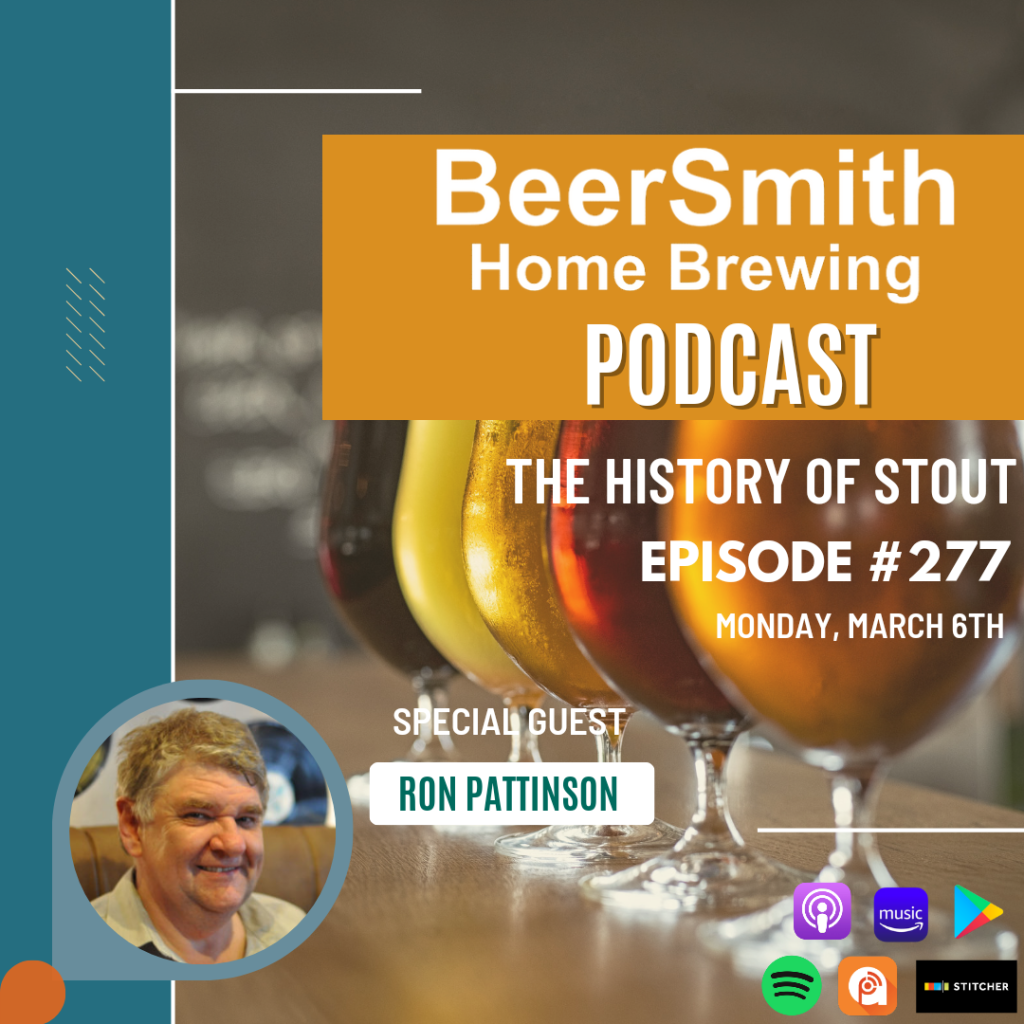 Ron Pattinson joins me to discuss the history of Stouts in the British isles including London Stout, Irish Stout and other variants. Subscribe on iTunes to Audio version or Video version or Spotify or Google Play Download the MP3 File– Right Click and Save As to download this mp3 file. Your browser does not support […]
Ron Pattinson joins me to discuss the history of Stouts in the British isles including London Stout, Irish Stout and other variants. Subscribe on iTunes to Audio version or Video version or Spotify or Google Play Download the MP3 File– Right Click and Save As to download this mp3 file. Your browser does not support […] 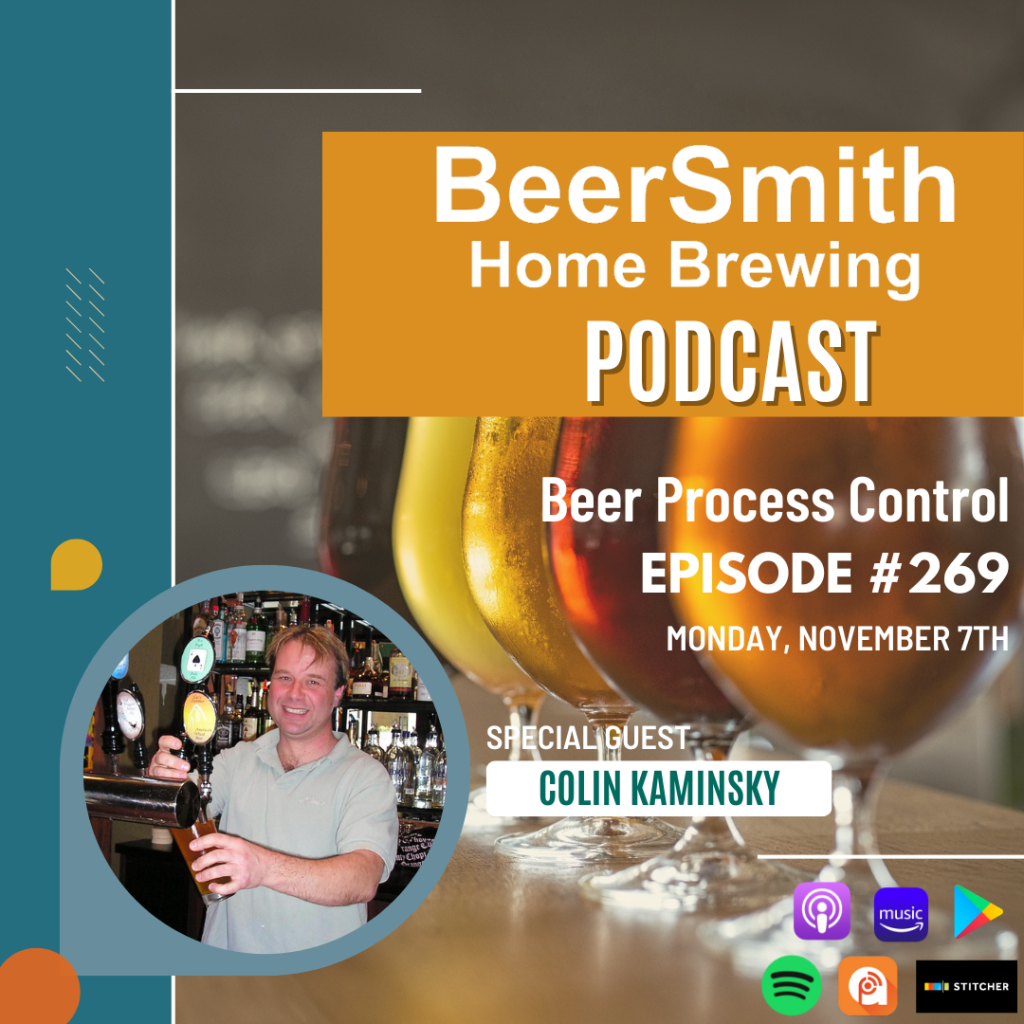 Colin Kaminski joins me this week to discuss his experiences with professional brewing process control and how it applies to the home brewer. Subscribe on iTunes to Audio version or Video version or Spotify or Google Play Download the MP3 File– Right Click and Save As to download this mp3 file. Your browser does not […]
Colin Kaminski joins me this week to discuss his experiences with professional brewing process control and how it applies to the home brewer. Subscribe on iTunes to Audio version or Video version or Spotify or Google Play Download the MP3 File– Right Click and Save As to download this mp3 file. Your browser does not […]  This week I take a look at the technical nature of beer brewing and how it differs from making other beverages like wine, cider or mead. Beer Brewing and Technology I often open my designing beer presentations with a description of the technical nature of brewing. Beer brewing is a much more technical hobby than […]
This week I take a look at the technical nature of beer brewing and how it differs from making other beverages like wine, cider or mead. Beer Brewing and Technology I often open my designing beer presentations with a description of the technical nature of brewing. Beer brewing is a much more technical hobby than […]  This week I look at the malting process, how we commonly group malts and the impacts for beer brewing. The Malting Process The malting process starts with raw barley grain, harvested from the field. The grain is dry when brought into the malt house, but the first step is to immerse the grain into water […]
This week I look at the malting process, how we commonly group malts and the impacts for beer brewing. The Malting Process The malting process starts with raw barley grain, harvested from the field. The grain is dry when brought into the malt house, but the first step is to immerse the grain into water […] 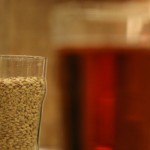 This week I cover some of the changes you need to make to brew a high gravity beer using BeerSmith software. High gravity beers (generally over 1.060 or so) do require some minor changes to your recipe and equipment profile as well as some process changes for brewing. High Gravity Brewing Considerations I’ve written a […]
This week I cover some of the changes you need to make to brew a high gravity beer using BeerSmith software. High gravity beers (generally over 1.060 or so) do require some minor changes to your recipe and equipment profile as well as some process changes for brewing. High Gravity Brewing Considerations I’ve written a […] 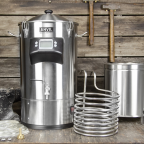 This week I take a look at the rapid rise of all-in-one BIAB style brewing systems for all grain brewing. These affordable, compact systems have quickly become the favorite of beginner and experienced brewers alike. All-in-One Brewing Systems Only a few years ago, most serious homebrewers had full-size three tier brewing systems for their all […]
This week I take a look at the rapid rise of all-in-one BIAB style brewing systems for all grain brewing. These affordable, compact systems have quickly become the favorite of beginner and experienced brewers alike. All-in-One Brewing Systems Only a few years ago, most serious homebrewers had full-size three tier brewing systems for their all […]  This week I take a look at the Dunkles Bock beer style from Northern Germany and examine its history and how to brew one. Dunkles Bock is a dark, strong, malty German lager. Dunkles Bock History Bock beer traces its history to Einbeck, a small German town between Kassel and Hannover. Brewing records mentioning bock […]
This week I take a look at the Dunkles Bock beer style from Northern Germany and examine its history and how to brew one. Dunkles Bock is a dark, strong, malty German lager. Dunkles Bock History Bock beer traces its history to Einbeck, a small German town between Kassel and Hannover. Brewing records mentioning bock […]  Ron Pattinson joins me this week to discuss the interesting history of the Berliner Weisse sour beer style and how its popularity rose and fell in its native Germany. Subscribe on iTunes to Audio version or Video version or Spotify or Google Play Download the MP3 File– Right Click and Save As to download this […]
Ron Pattinson joins me this week to discuss the interesting history of the Berliner Weisse sour beer style and how its popularity rose and fell in its native Germany. Subscribe on iTunes to Audio version or Video version or Spotify or Google Play Download the MP3 File– Right Click and Save As to download this […] 